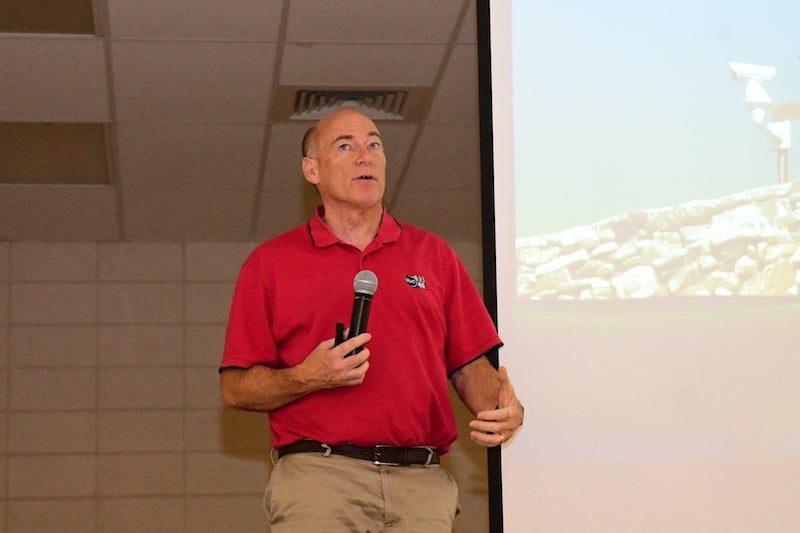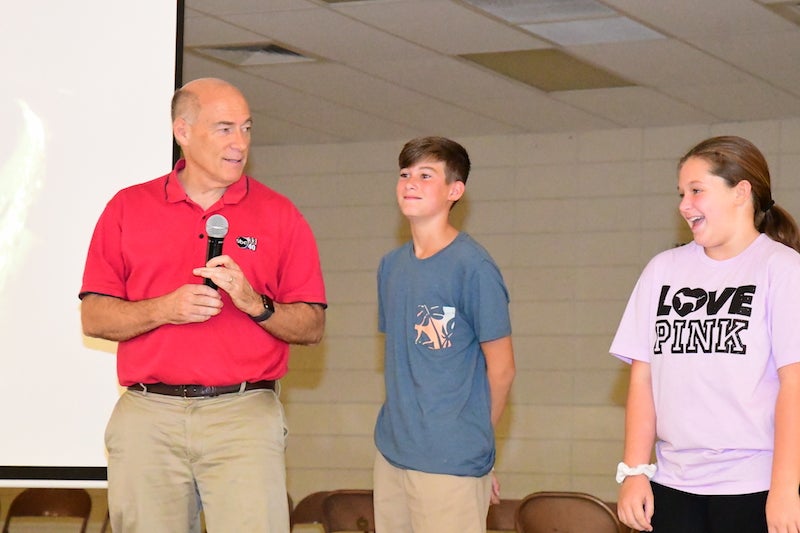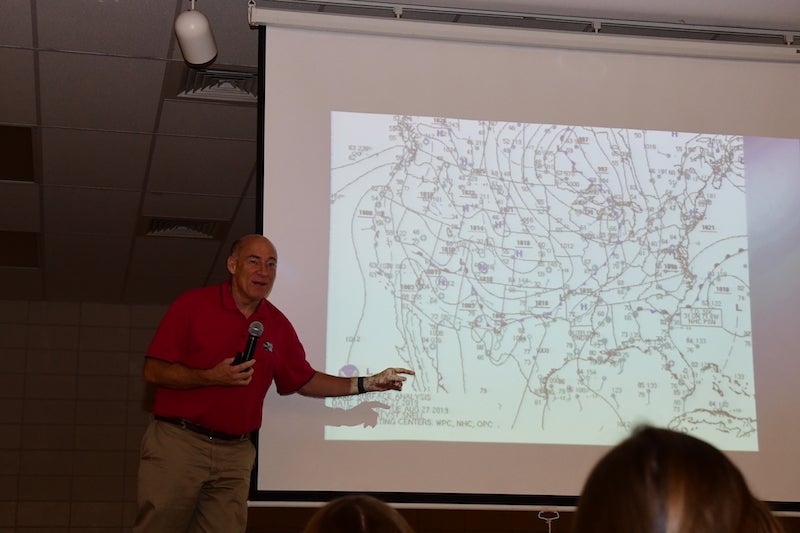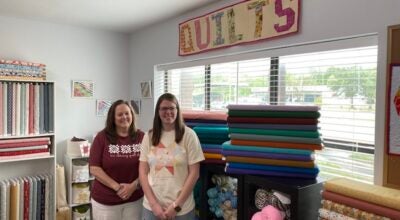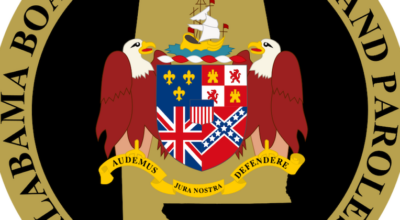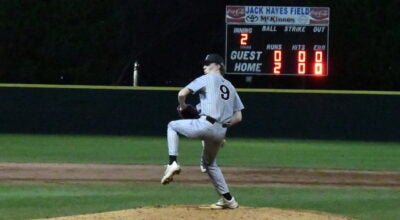Meteorologist James Spann visits CMS
Published 2:16 pm Wednesday, September 4, 2019
|
Getting your Trinity Audio player ready...
|
By JOYANNA LOVE/ Senior Staff Writer
Meteorologist James Spann of ABC 33/40 made his annual visit to Clanton Middle School on Sept. 3 to talk to sixth-grade students about forecasting the weather and how storms form.
Spann showed students satellite images of Hurricane Dorian and explained how it moved over the Bahamas.
“This is horrible,” Spann said. “This is a humanitarian crisis. We have no idea how many people died.”
He described how the storm stalled over the Bahamas a couple of days ago and the damage.
“There’s not much left,” Spann said. “It’s just heartbreaking.”
Spann uses a number of instruments to measure what the wind, moisture in the air and atmospheric pressure to know what the weather is doing.
“All this comes together, and we make maps,” Spann said. “… I love maps,” Spann said.
The direction air is going gives important weather information.
Barometer readings tell the weight of the air and if it is heavier or lighter than the air near the ground.
“When air sinks, it will not rain,” Spann said. “Half of my job is figuring out if air is going down or up.”
Information from weather balloons, satellites and radar are is used.
Spann said weather balloons attached to a box of weather instruments and a radio signal are released twice a day from the Shelby County Airport.
“On the way up, it sends us weather information about wind, temperature, pressure and moisture,” Spann said.
Satellites in outer space show what is going on from a top view of clouds, radar is used to determine what is actually happening on the ground.
“Every minute they are taking a picture of the planet, which is awesome,” Spann said. “… Sometimes we can see storms that might impact us in two weeks.”
Spann said radar creates an image by bouncing energy off of raindrops.
“You guys need to know how this works,” Spann said. “… Gray, blue and green is light rain. When they start to get to yellow, it’s raining pretty good. Heavy rain is red and white. When you see white on radar, it’s raining so hard you can’t see the house across the street.”
He showed students that a tornado can be spotted on radar by looking for the end of a hook shape in the storm image.
“Some of you girls in here, some of you boys are going to work in science,” Spann said. “Whatever science you are in here’s the great things, we can use our science to help other people. That’s why we are here.”
Spann reviewed the types of clouds, telling the students that cumulus clouds were his favorite. He said these clouds grow into the cumulonimbus clouds that bring rain and thunderstorms.
Spann said storms are important because rain is needed, but people need to be prepared and go inside when there is lightning and thunder. If there is lightning within eight miles, get inside, Spann said. He said a car is good protection from lightning, but not from a tornado.
In the event of a tornado, a person should be in the smallest room (or closet) of the lowest floor of the house (“If you have a one-floor house, you’re good”) with no widows and wearing a helmet, Spann said.
He said a sports helmet or bicycle helmet would work and could save a person’s life.
“If you live in a mobile home, you have to leave,” Spann said. “You have to talk to your family and your parents and decide what you are going to do.”
Spann said many will not hear a tornado siren during a storm. When a tornado warning is issued is the best time to take precautions. Having a weather radio is important to have an alarm sound, Spann said.
“When the weather is dangerous, you’ve got to pay attention,” Spann said. “… Don’t you dare go out in this trying to get something for YouTube. It’s not worth a life.”
Spann said many times a tornado cannot be seen from the ground and does not always include rain.
After showing footage of the aftermath of some tornadoes, Spann said “when this ever happens … up the road, I think the right thing to do is to go help someone. You can adopt a family.”
Spann said this was something he has done.
It was actually staring out the window during first grade that eventually lead to Spann becoming interested in weather. He said his first-grade teacher had an impact on him.
“She gave me a book from the library which was a book about weather,” Spann said. “She was good. She was hard, but she was good. She thought I was interested in weather and this book she gave me started me on a journey I am still on today learning about this stuff.”


